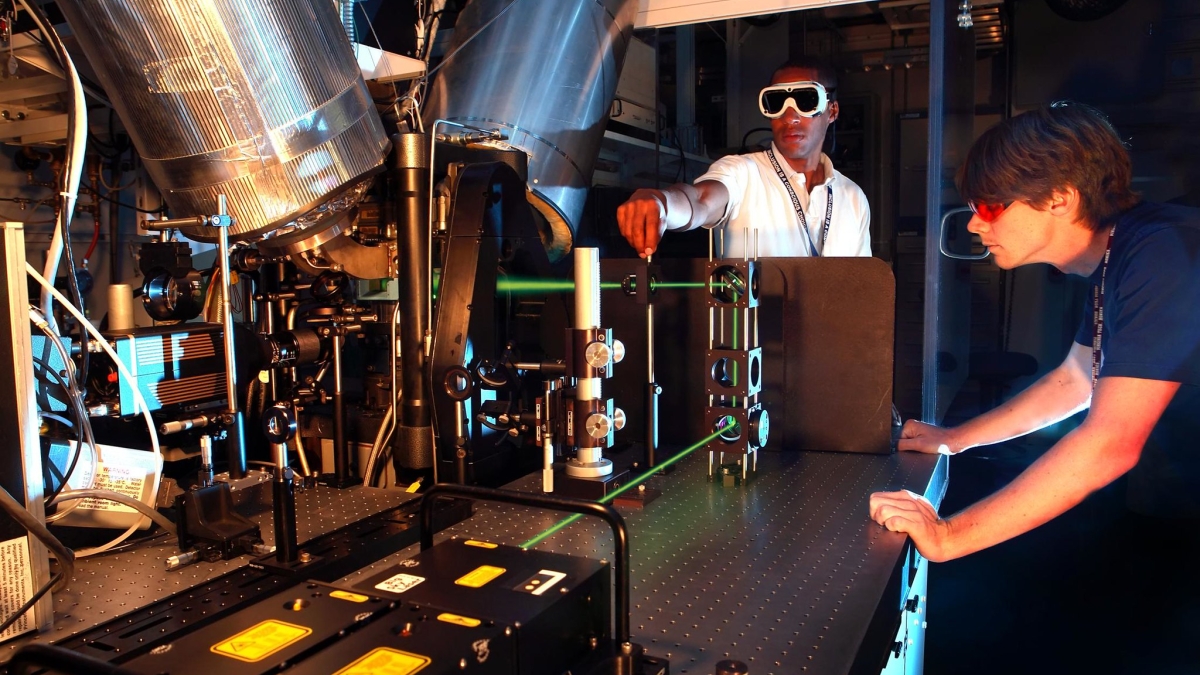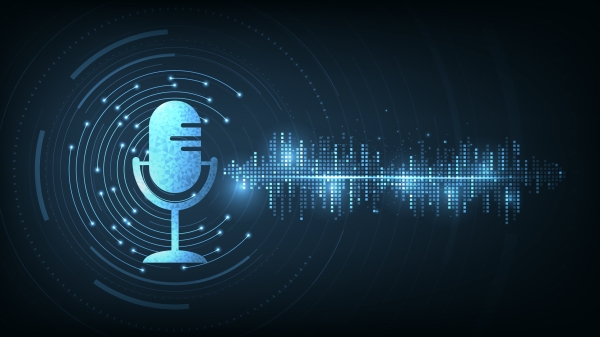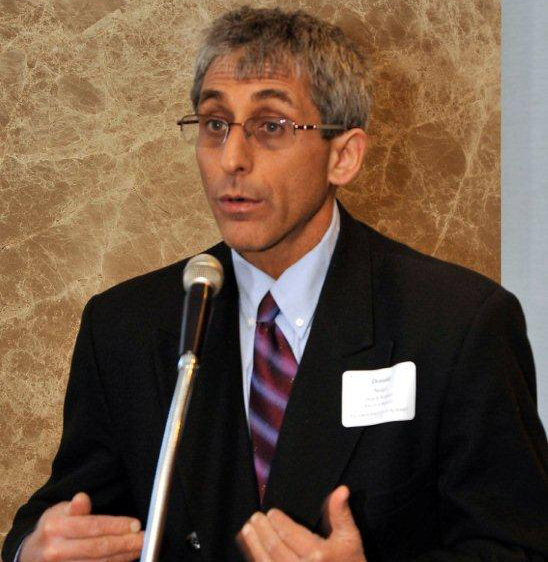ASU professor to co-lead group helping to maximize innovations at federal labs

Thousands of scientists are hard at work across the country, but their innovations don’t always make it out of their labs. A professor at Arizona State University has been tapped to co-chair a prestigious national committee to find out how to maximize intellectual property created at the national laboratories.
Donald Siegel, director of the School of Public Affairs at ASU, is on a committee for the National Academies of Sciences, Engineering and Medicine to investigate digital products created in the federally funded national labs.
“The Trump administration is trying to figure out how to generate a higher return on investment in federally funded research, so we’ll be looking at some best practices and bottlenecks,” said Siegel, an economist and Foundation Professor of public policy and management. He is co-chair of the committee, which will work for two years and then will likely produce a report and possibly testify before Congress.
Currently, the federal government gives more money to the nation’s federal labs than to the university labs, yet university labs are far more successful at commercializing their results.
There are more than 300 federal labs, including well-known institutions such as Los Alamos National Laboratory in New Mexico and the NASA Jet Propulsion Laboratory in California. The only federal lab in Arizona is the U.S. Army Electronic Proving Ground at Fort Huachuca in southern Arizona.
Donald Siegel
For 2014, the federal government spent about $38 billion on research at universities and $42 billion on federal labs. In that year, the universities produced 6,363 patents compared with 1,931 at the federal labs, and university labs generated $2.5 billion in licensing income compared with $194 million for the federal labs.
ASU earned 130 patents in 2018 and is tied for 10th among universities in the world, thanks to a model that fast-tracks research from lab to commercial application.
“Universities are doing a great job at technology transfer. They’re aggressively engaging in patenting and licensing and startup activity,” Siegel said. “But what’s going on at the federal labs? Why aren’t we seeing the same level of technology transfer?”
Lack of data is one problem the committee will address.
“We have very poor data on tech transfer at the federal labs. It’s horrendous,” Siegel said. “The university data are much better and much more systematically collected and disseminated and we understand it a lot better than we do at the labs, which are pretty much a black box.”
Siegel answered some questions from ASU Now.
Question: Your committee is starting this process by looking at digital products. What are digital products?
Answer: We will need to precisely define that. Everything is a digital product now. Computers are embedded in many products and services — our appliances, cars, drug-delivery systems, pacemakers.
Q: So is this about profits?
A: We’re not only interested in whether the technology makes money. Commercialization is just part of it. If you’re a pure scientist, you might not care about money but you still want your innovation to be used by people. The technology has social value. As a scientist, it would give me pleasure to know that the research I worked on is improving peoples’ lives. Things don’t have to be sold. Software can be open source.
Q: What might be some reasons for the difference in commercialization between university labs and federal labs?
A: The federal labs have a different mission. They are much more secretive, and they should be because some are working on national security or sensitive defense-related technology that we don’t want to leak out. So we have to be careful with that. Technology transfer gets a lot of federal labs nervous because it implies the possibility of technologies being used by enemies.
Congress decided when it enacted the Bayh Dole Act in 1980 that, despite the fact that the government is paying for most university research, the universities could patent and copyright the intellectual property they create. Federal labs have a lot of flexibility but not as much. For example, a scientist at a federal lab can’t start a company, and an ASU faculty member can. If you’re a federal employee and you create new software, you’re not allowed to copyright it. It belongs to the taxpayer, technically.
Also, I think universities have been under a lot of pressure to generate new sources of revenue both because of the decline in state support and the decline in some fields in federal research dollars. Universities have had to be more entrepreneurial.
Federal labs don’t have the same kind of pressure that universities do, and that’s one of the key institutional differences.
Q: So how can the federal labs be motivated to increase commercialization?
A: Based on my own research, I would argue that we have to look at incentives for scientists at these labs. How are they rewarded? Whether it’s financially or in terms of promotion. In addition we have to think about organizational and psychological factors that might influence scientists to engage in commercialization, such as organizational justice — how you’re treated in the workplace. Does leadership matter?
And there are issues such as work-life balance. When we interview faculty and postdocs, they say, “I don’t have time to take on commercialization. I have family obligations, research, teaching. I don’t have time to file a patent or start a company.”
What I will try to do in this committee is draw on some lessons from what we’ve learned by studying what faculty do.
And we may have the flexibility to modify some legislation to say things like, “OK, federal employees can copyright software” or to change incentives so employees at federal labs can start a company.
We’ll have to see how much congressional support there is, but this is a bipartisan issue.
Q: What are some potential obstacles?
A: We’ll be getting feedback from all sides, including the private sector, which I think will fight this because we’re taking away some of their profits. They would like everything the government produces to be free. They don’t want to see any federal scientists getting money from this.
We’ll also measure the value of open-source software. We want people to use the technology, but if we give it away, nobody will want to develop it. Who will put the time and energy into something they have to give away?
Some of the software manufacturers are going to be concerned about the idea of the government copyrighting software or being more aggressive in exercising its intellectual property rights.
But it’s important to figure out how to change the culture to support entrepreneurship in the federal labs. At ASU, we’ve incentivized people with promotion and tenure, and not just incentives but also by creating a culture to support this.
Top image: Sandia National Laboratories' Thermal Test Complex in Albuquerque, New Mexico, provides a controlled environment to conduct thermal testing. Photo by Randy Montoya/Sandia National Laboratories
More Science and technology

ASU professor shares the science behind making successful New Year's resolutions
Making New Year’s resolutions is easy. Executing them? Not so much.But what if we're going about it all wrong? Does real change take more than just making resolutions?Michelle Shiota thinks so. …

ASU student-run podcast shares personal stories from the lives of scientists
Everyone has a story.Some are inspirational. Others are cautionary. But most are narratives of a person’s path, sometimes a circuitous one, from one point in their lives to another.A new podcast…

The meteorite effect
By Bret HovellEditor's note: This story is featured in the winter 2025 issue of ASU Thrive.On Nov. 9, 1923, Harvey Nininger saw his future explode across the Kansas sky. He would become perhaps the…
